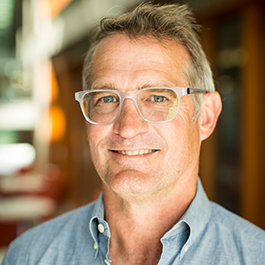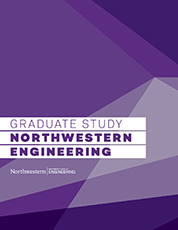EDI Thesis Projects: Novel Takes on Hybrid Design
Students in Northwestern’s Engineering Design Innovation (EDI) program demonstrate breadth and depth of their design innovation craft through individual thesis projects that illuminate each student’s unique skills as a hybrid designer.
What does a reptile lair have to do with an intensive care unit or an online video game?
The answer is each was a topic examined by students in Northwestern's Engineering Design Innovation (EDI) program in 2021 as part of their thesis projects. EDI's Thesis gives students the opportunity to research a problem they are passionate about and identify a possible solution. The two-quarter course is a chance for students to dive deep into an area they are interested in while also demonstrating the breadth of knowledge accumulated throughout the program.
Thesis also allows students the chance to work directly with industry mentors who offer guidance and feedback throughout the project.
 Thesis is co-taught by Professor Jim Wicks, co-director of EDI, and adjunct lecturer Amy Schwartz. Wicks recently talked about what he thinks makes a thesis project such a valuable opportunity for students and what returning alumni tell him about the experience.
Thesis is co-taught by Professor Jim Wicks, co-director of EDI, and adjunct lecturer Amy Schwartz. Wicks recently talked about what he thinks makes a thesis project such a valuable opportunity for students and what returning alumni tell him about the experience.
What is the most unique aspect of Thesis?
What's cool about Thesis is students get to decide whatever it is they want to focus on. They get to decide what problem they care most about or are most interested in trying to solve. The topic is wide open, from designing a better drain cover to trying to figure out mental health interventions that can compliment services of the Red Cross in moments of disaster relief, and everything in between.
The most unique thing is the role the mentors play. What we try to work really hard at in EDI is having strong adjunct faculty and a strong network of designers who work professionally across a lot of different disciplines and industries. We do that in part so that our students have a wide range of perspectives available to them as Thesis mentors. Toward the end of their first thesis quarter, students are paired with a mentor, and then in their second quarter, they meet with their mentor every week for feedback and advice. It's a great way to hear and learn from industry experts while receiving tailored feedback about a project that the students are passionate about.
EDI places a large emphasis on teamwork and community building, so why is Thesis something students do individually?
In the first year of EDI, we focus on team, community, and individual development, and the projects are team-based because we think that's the best way to learn. Along the way, students might learn about areas they're prepared to elevate in, and Thesis allows for that. Thesis also forces students to challenge themselves in areas that may not be their strength. When they graduate, hopefully that area they felt good at is even stronger, and the area where they were weaker, they were forced to address.
When do students start working on their Thesis project?
We first meet to talk about Thesis about a month before they finish their spring quarter. We share important details and explain that it will be an opportunity for them to showcase what they've learned. We challenge them to spend that last month and the summer thinking through three topics they think they could focus on that would allow them to exercise their skills in digital design, physical design, or service design. Then on the first day of fall quarter, they present their topics to the class, give a one-minute description about each, and listen to feedback from the class, as well as Amy and myself.
What is the timeline from that point forward?
After the students hear the feedback, they spend the next two weeks working with the faculty to determine which of their topics they want to focus on. Once they decide, they spend that first quarter focused on research, understanding the problem and identifying what they think could be potential solutions. The quarter culminates with a presentation to faculty, their peers, and mentors. Then in the second quarter, students take those concepts and iteratively design and test specific design executions with consumers and against the project objectives. The second quarter is less about what the problem is and more about how they might execute different design details. The quarter ends with a 10-minute presentation of their final project to friends, families, mentors, faculty, and peers.
Is 10 minutes enough time for them to summarize two quarters worth of research and design?
Students have 10 minutes to tell a story of all the work they've done, and we always hear from alumni when they come back that they never felt those 10 minutes were enough time. Those same alumni also say that having to take all the work they did and boil it down to 10 minutes and communicate it with richness and in a thorough way was one of the best skills they learned in Thesis. No one makes 30-minute presentations at work. You've got to get to your point and do it in a way that reflects your research and insights.

